Everything would change in the new 1976 season. Tyrrell would made its debut with their Tyrrell P34, with four small wheels in front, and two normal wheels in the back. Besides the Tyrrell there was some more talk at 75’s year’s end. Simultaneously rumours arose about the March 2-4-0 while the same time BRM designed a similar 2-4-0 concept. If this was not enough, another rumour appeared about a six wheeler from Ferrari the 312T6.
To start with, i would like to mention that i wrote this article about the Ferrari 312T6 years ago. I’m not aware any more of the sources i used. I only recall i used Autosprint, Motorsportmagazine, some Autosport magazines and a couple of sites. As i always had a contact person back then on MSN that gave me some information. Therefore i would like to credit everyone who gave the information and so on.
The 2nd of December 1976 the March 2-4-0 made its public appearance. Just two weeks later in the December 15, 1976 edition of the Italian Autosprint an article shown the rumours of a Ferrari “Six Wheeler”. No photo whatsoever was in the magazine only the description of the car from Autosprint self. The car’s design was similar to the ERA’s and others models used pre-war in hill climbs and on Racetracks. According to that, Enzo Ferrari’s team was working on a car with dual rear tyres, mounted on the same axle. There was only one question remaining is it true, or is the rumour just a rumour to gain publicity?
It would talk three months before the speculations of the Ferrari six-wheeler came back in the media. It is the Thursday, the 10th of March 1977, when someone outside the circle of Ferrari was able to give faithful information, as he witnessed it himself. That day Niki Lauda had scheduled a test at Fiorano with the Ferrari 312T2. After Niki Lauda finished his test with the 312T2, Sante Ghedini, Ferrari’s Public relations, asked a small group of photographers and journalists, not to take any photos anymore because the Scuderia were to reveal their secret. Niki Lauda would take place in the Ferrari Six Wheeler, unofficially the Ferrari 312T6 and do a couple of rounds. Strictly speaking, there was a six-wheeler Formula One car. However, there were no similarities with the Tyrrell P34, March 2-4-0 or the BRM 2-4-0. The Ferrari 312T6 was fitted with dual rear tyres on the rear axle only.

After the test, Niki Lauda left Fiorano, without speaking with any of the journalists, to Bologna to take the plane and travel to his home in Salzburg. On the 13th of March 1977 Ferrari announced that they would take the Ferrari 312T6 to the Nardo Oval test track, Fiat property, located near the town of Lecce, the southeast of Italy. To carry out the first official test with the six-wheeler.
It was clearly that the Ferrari 312T6 was different from the more “regular” Tyrrell P34 and the March 2-4-0. What tried Ferrari with their experimental six-wheeler? Suggestions stated that Ferrari could present a differential between each side of the tyre so that the innermost rotate at lower RPM than the time or transit outside curves. At first it sounds very advantageous complicated to create, first the double axle, second the mechanical regulations that were around during those years. If you dig in the mechanical regulations from 1977 the Ferrari 312T6 with his dual wheels on the rear axle exceeded the statutory minimum width, and the rear view looked more like a wall from the perspective of another driver behind the car. Another point was the alleged presence of the differential that would require a link between the tyres and cross the box used by Ferrari collaborated to it shortly. Another function would be the distribution of adequate weight spreading.
However, on the 13th of March 1977 Niki Lauda tested with the Ferrari 312T6 at Nardo. As the circuit is characterized by radius banked curves allowed Niki Lauda to reach a top speed close to 300 KM/H. Side note, during late season testing at Monza, Niki reached a top speed of 312KM/H with the Ferrari 312T2. The top speed of the 312T6 was not bad at all. After the test Niki Lauda was slightly optimistic of the car though cautious in his statement say that the 312T2 would not be replaced in 1977 with the 312T6. As the T6 was planned as a development program that would take at least four or five months. Perhaps for 1978?
To go deeper into the Nardo test, it gave the Scuderia the opportunity to expand their knowledge of the 312T2. The focus was mostly on the rear tyres as how the team could create more drag. So what were the positive and negative effects of the Ferrari 312T6 compared to their 312T2.
– Significant radial deformations at high speeds such that the effective contact patch with the asphalt suffered a great reduction and also decreased the motor skills.
– Because of the excessive lateral deformation of the tyres, through high-speed corners because of the flexibility of the rubber and the way the suspension worked, the contact patch was reduced up to 35%. Even with the best developed suspensions at that time.
The occurred problems were most worried by Ferrari designer Mauro Forghieri. He tried to resort the problems by splitting of the rear covers on the same wheels. The results was two reduced sections and a much smaller diameter than conventionally was at that time. Several advantages were created because of it.
– There was a significant reduction in the aerodynamic drag, and consequent increased the speed driven by the reduction in the diameter of the rear tyres. Compared to the Ferrari 312T2 rear tyres, the dual tyres turned out to be 12 centimetre lower. As seen on the photos the inner tyre of each tyre was hidden by the body.
– The self-height was reduced around 6 centimetre. Which allowed a centre of gravity closer to the ground, resulting in a better stability of the car.
– A significantly cleaner flow over the rear wing resulted in a great downforce on the rear axle.
– As the narrower section, the tyres suffered a smaller deformation. Estimated that increased cornering grip hovered just over 50% of what has been achieved only with large tyres.
There were also negative effect of the dual rear tyres on the Ferrari 312T6. The car increased in weight due the extra tyres and rims. You could say that the increase in weight was also needed to provide more strength to the cars bodywork and suspension. Therefore, the Scuderia continued to keep on working on their De Dion suspension bridge. This type of suspension was already been tested in the summer of 1976 with the 312T2. Unfortunately, this suspension would end up as the Achilles heel of the 312T6. Another problem, as already told, was the maximum width of the 312T6, it exceeded it maximum limit. The car underwent some reforms such as reducing the length of the axle shafts, which resulted in greater vertical oscillations absorb, or too lean the same which caused poor results. In addition, a longitudinal cross replaced the complete gearbox housing. Just to reduce the maximum width of the car.
However, the biggest problem for the Scuderia seemed to be making the tyres themselves. While during the test conducted conventional Ferrari front tyres used dual tyres mounted on specially, by speedline, manufactured signature, required special tyres. As already seen with the Tyrrell P34 given the exclusive contracts of a team with a tyre supplier was already a big issue. This was another problem for the Ferrari 312T6 that wasn’t easy to deal with.
Apart from the technical aspects, I hope you understood a bit, the Scuderia continued with their development tests at Fiorano, only they didn’t do it in secrecy anymore. On the 16th of March 1977 completed an intense practice session with the Ferrari 312T6 in the afternoon they would devote the testing for aerodynamic solutions for the six-wheeler. After the test sessions were finished, Ferrari announced that the testing with the 312T6 would continue on the 21th of October 1977. This time Carlos Reutemann would take place behind the wheel. It would be his first time he even would see the “mysterious” Ferrari six-wheeler.
As Niki Lauda was optimistically positive about the Ferrari 312T6, Carlos Reutemann was far from impressed of Ferrari’s six-wheeler. During his first rounds on Fiorano with the car, he wanted to try a verdict on it. His verdict was clearly it was a fright and far from good. During those first rounds, Carlos took turns ten pace “quiet” and found, in fact told his mechanics, that if what they wanted was a stiff rear was something that had managed to spare. He also mentioned that in the section of the tunnel crossing the car tended to rise slightly and then fell very sharply yet weight on the suspension due a slightly knoll. Which was not the case with the 312T2 at the same point. After several rounds Carlos decided to push with the car, at the same place he mentioned the problem with the car at lower speed, Carlos spun with the car when it swerved violently to the left, letting him hitting the guardrail. The car suffered various damage, the suspension broke of the car. Niki Lauda would test the car a couple of times more.
As Carlos Reutemann and Niki Lauda kept on doing showing great results during the season with the 312T2, Lauda even on the each of winning the championship, it seemed Ferrari stopped their efforts with the 312T6. While Lauda was on his way to become the World-Champion with the Ferrari 312T2, another pilot was “lucky” to be one of the few that tested or better said drove with the Ferrari 312T6. Ferrari’s test driver at that time, Giorgio Enrico though not much information is known of him testing the six-wheeler.
You can say that the Ferrari 312T6 had a lot of shortcomings to say it would ever be able to make it’s debut on the circuit. Probably Enzo Ferrari had the same ideas in the spring of 1977. Enzo announced that the tests with the car would not continue, as long Goodyear would decide to provide them with special tyres, therefore the Ferrari 312T6 would not participate in any Grand Prix to the 1978 season. What if the car would have made it’s debut? The car was not declared illegal by the FIA to begin with. It does not matter in the end the FIA would ban six-wheelers and keep the cars controversial with four tyres.

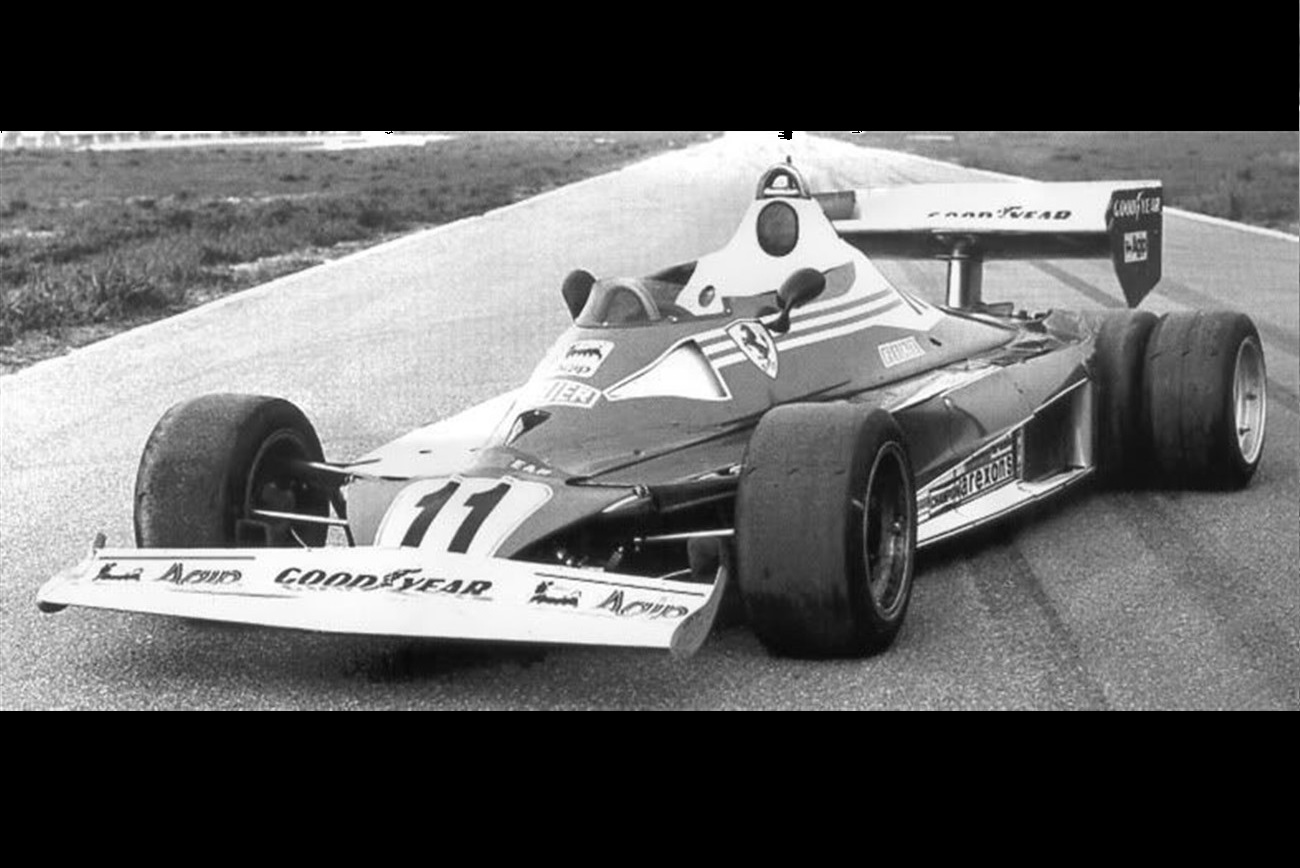
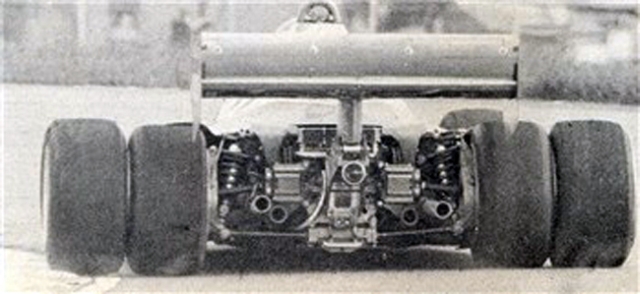
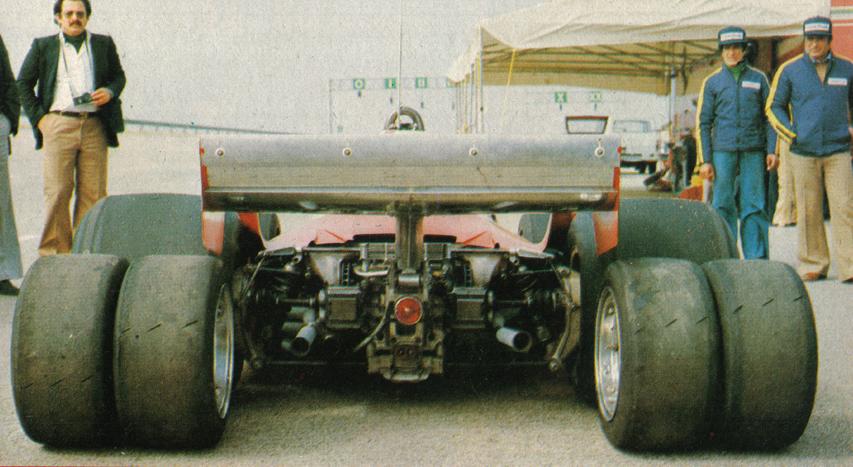
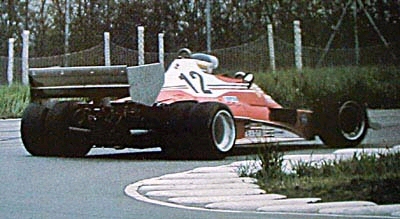

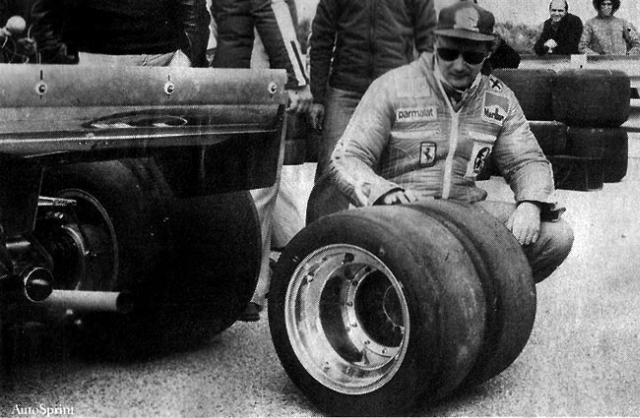



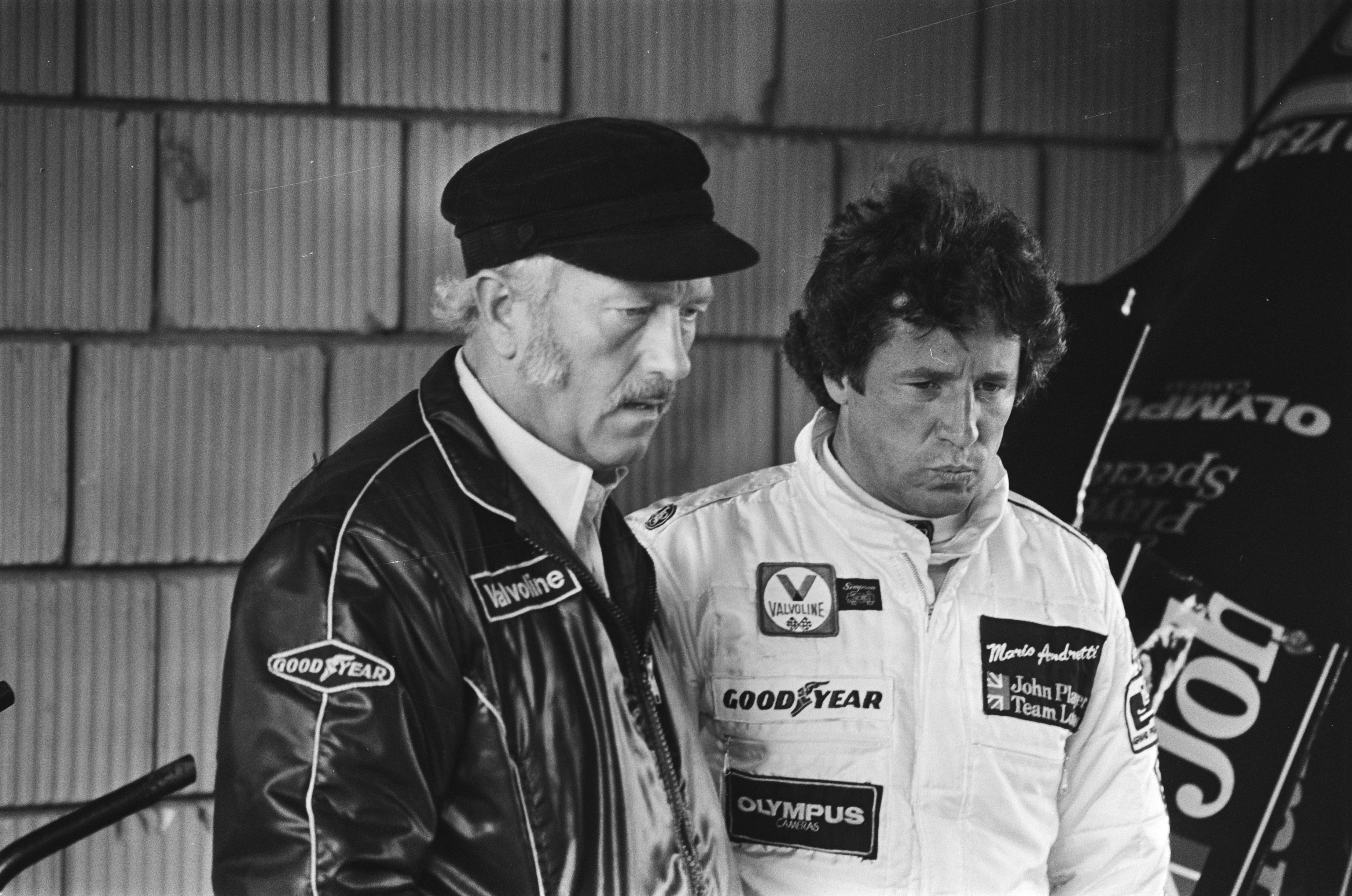
1 thought on “312T6; Ferrari’s forgotten six-wheeler”
Comments are closed.